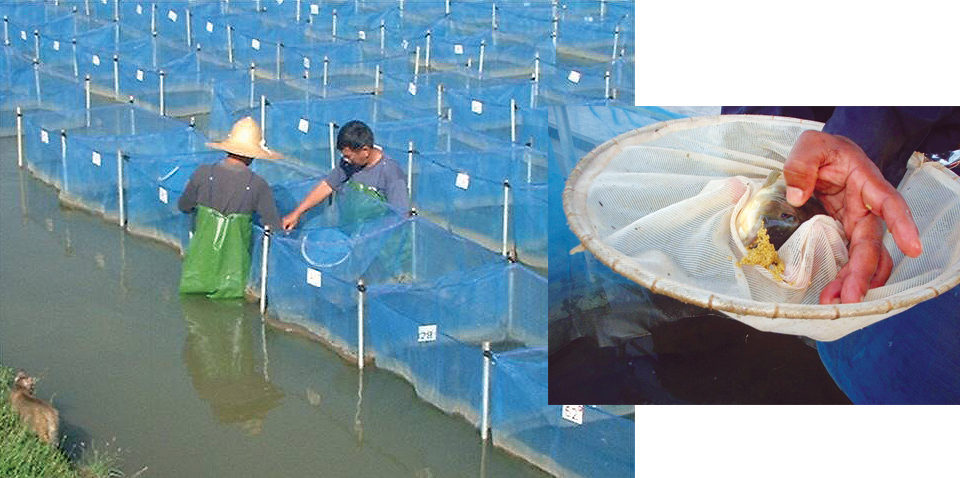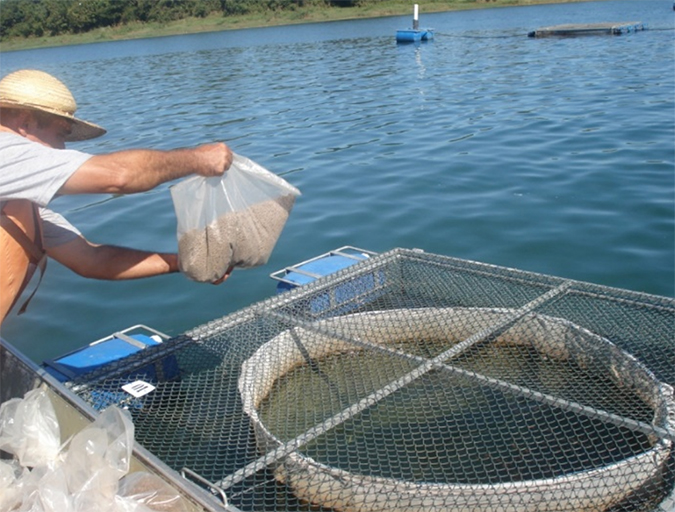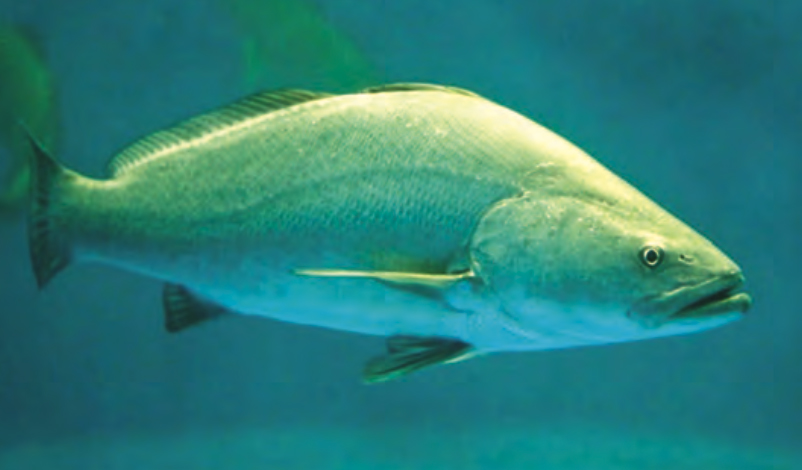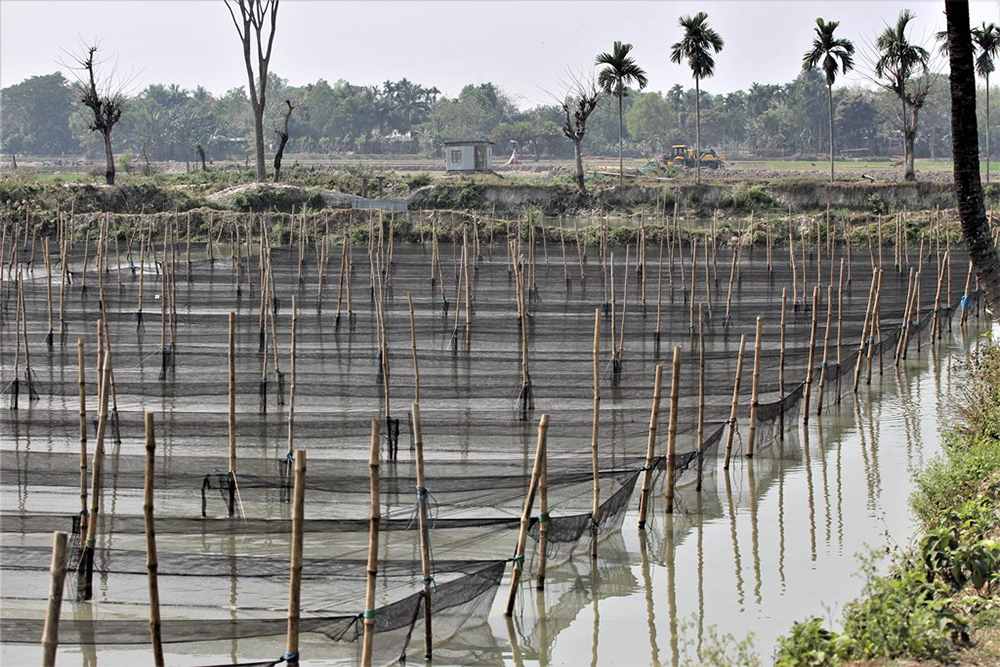Global project inspires similar effort for carp

Research and development in animal breeding and genetics have been responsible for increased productivity in crops and livestock, and more recently in salmonids. By contrast, no efforts were made until the 1980s for the genetic improvement of tropical finfish. In the absence of formal genetics programs, in many cases, the early cultured stocks were in worse condition than their wild counterparts due to inbreeding and selection efforts in the wrong directions.
In view of this, The WorldFish Center and its national research partners from the Philippines and Norway took up the challenge to develop methods for the genetic enhancement of tropical finfish using Nile tilapia (Oreochromis niloticus).
Tilapia stocks in Asia
A 1980 meeting of leading international tilapia specialists convened by WorldFish Center in cooperation with the Rockefeller Foundation identified genetics research as a high priority. In 1984, authors Smith and Pullin predicted the future success of the tilapia industry in the Philippines and elsewhere depended to a large extent on the performance of cultured stocks.
Surveys and socioeconomic studies undertaken by The WorldFish Center in collaboration with national partner institutions in the Philippines and Taiwan during the early 1980s, and a 1987 international workshop in Thailand on tilapia resources confirmed the situation. There were widespread problems due to the poor genetic quality of farmed tilapia stocks used for aquaculture in Asia.
GIFT is born
The findings of the 1987 workshop led to the inception of the Genetic Improvement of Farmed Tilapia (GIFT) project in 1988. Funding support was obtained from the United Nations Development Program and Asian Development Bank. Partnerships were developed between WorldFish Center (at that time ICLARM), the Norwegian Institute of Aquaculture Research, Philippines Bureau of Fisheries and Aquatic Resources, Freshwater Aquaculture Center of the Central Luzon State University, and Marine Science Institute of the University of the Philippines to develop genetic enhancement methods for tropical finfish using O. niloticus as a test species.
O. niloticus was chosen because of its many desirable attributes, including short generation interval, importance in developing countries, hardiness, feeding habits, resistance to diseases, and general suitability for culture in a wide range of farming systems.
In order to establish a broad genetic base before starting the genetic improvement program,wild O. niloticus populations were collected from Ghana, Egypt, Kenya, and Senegal during 1988 and 1989, and transferred to the Philippines. O. niloticus populations from Israel, Singapore, Taiwan, and Thailand used by tilapia farmers in Asia were also collected in the Philippines to establish eight tilapia populations for the genetic improvement program.
Major achievements
The selection strategy followed by the GIFT project was combined between- family and within-family selection. The first to sixth generations of selection focused exclusively on growth. Six generations of selection were undertaken from 1993 to 1997 based on the mating of 100 selected males to 200 selected females per generation in a nested design. Progenies representing all the families were individually tagged and reared in different test environments for 120 days. After the growout period, the test fish were ranked based on estimated breeding values.
The selectively bred strain came to be known as “genetically improved farmed tilapia” or GIFT fish. The genetic gain per generation was about 17 percent across five generations of selection for growth. The accumulated genetic gain in relation to the base population was 85 percent.
Evaluation
The second- to fourth-generation GIFT fish were evaluated in Bangladesh, China, the Philippines, Thailand, and Vietnam in terms of physical and economic performance. The performance of the GIFT tilapia and existing “best” local O. niloticus strains was evaluated in different farming systems and agroecological zones.
The GIFT strain performed better in terms of growth in both pond and cage culture systems. For example, the third-generation selected GIFT strain showed an average 18 percent greater body weight at harvest in China, and up to 58 percent in Bangladesh. Studies undertaken in Bangladesh, China, the Philippines, Thailand, and Vietnam indicated that adoption of the GIFT strain would increase tilapia production, lower tilapia prices, and increase consumption, thereby improving the overall nutritional status of the population.

GIFT dissemination
The improved GIFT strain is now in the public domain and is accessible to any government for research and development. The GIFT strain has been disseminated to 11 countries in Asia and the Pacific, and WorldFish Center continues to provide GIFT tilapia on request, following international material transfer agreements and quarantine protocols, and assessing the pertinent biodiversity and environmental issues.
GIFT technology expands
The GIFT project increased yields and profit margins for fish farmers in Asia and improved the welfare of poor rural households. Encouraged by these results, WorldFish and six carp-producing, developing countries prepared a proposal to implement a collaborative project for the genetic improvement of carp in Asia. The Asian Development Bank approved project funding for implementation in two phases. The first took place between June 1997 and December 2000, and the second one between January 2004 and December 2006. GIFT methodology is now also being applied toward the genetic improvement of indigenous O. niloticus and O. shiranus tilapia in Egypt, Ghana, and Malawi.
Where to now?
Conscious of the value of aquaculture development as a means of fighting poverty in developing countries, WorldFish now seeks to further its impact among fish farmers in developing countries by continuing to work with partner countries on improved strains of fish and refining genetic improvement methodology. It is also building capacity in partner developing countries, with the ultimate aim of providing them with intellectual independence in this area.
(Editor’s Note: This article was originally published in the January/February 2008 print edition of the Global Aquaculture Advocate.)
Now that you've reached the end of the article ...
… please consider supporting GSA’s mission to advance responsible seafood practices through education, advocacy and third-party assurances. The Advocate aims to document the evolution of responsible seafood practices and share the expansive knowledge of our vast network of contributors.
By becoming a Global Seafood Alliance member, you’re ensuring that all of the pre-competitive work we do through member benefits, resources and events can continue. Individual membership costs just $50 a year.
Not a GSA member? Join us.
Author
Tagged With
Related Posts

Health & Welfare
Aiding gut health with a natural growth promotor
A study with Nile tilapia conducted in commercial production cages in Brazil showed the potential – in the absence of major disease threats – of a commercial, natural growth promotor that modulates the microbiota (inhibiting growth of pathogenic bacteria and promoting growth of beneficial bacteria) and inhibits quorum sensing.

Health & Welfare
10 paths to low productivity and profitability with tilapia in sub-Saharan Africa
Tilapia culture in sub-Saharan Africa suffers from low productivity and profitability. A comprehensive management approach is needed to address the root causes.

Responsibility
Aquaculture gives endangered totoaba a fighting chance
The tenuous fate of a pint-sized porpoise, the critically endangered vaquita, is linked to a fish targeted by poachers fueling China’s appetite for maws. The vaquita remains in peril, but aquaculture presents some hope for the totoaba.

Intelligence
Bangladesh’s tilapia aquaculture industry shows resilience
Tilapia aquaculture in Bangladesh has developed significantly since 1999, based on the Genetically Improved Farmed Tilapia (GIFT) strain of Nile tilapia (Oreochromis niloticus) introduced from Malaysia and on the significant genetic improvement research work by the Bangladesh Fisheries Research Institute (BFRI).



